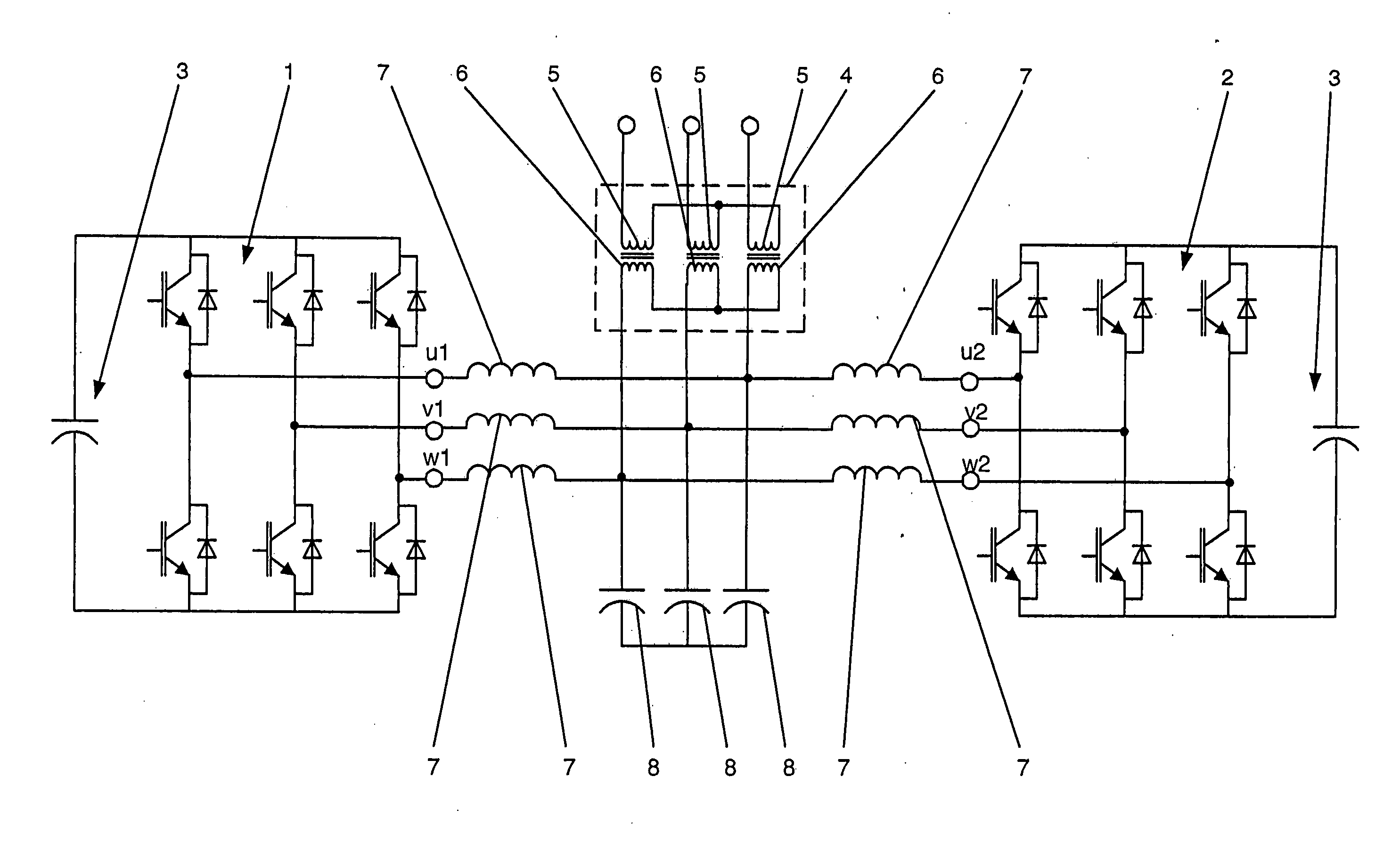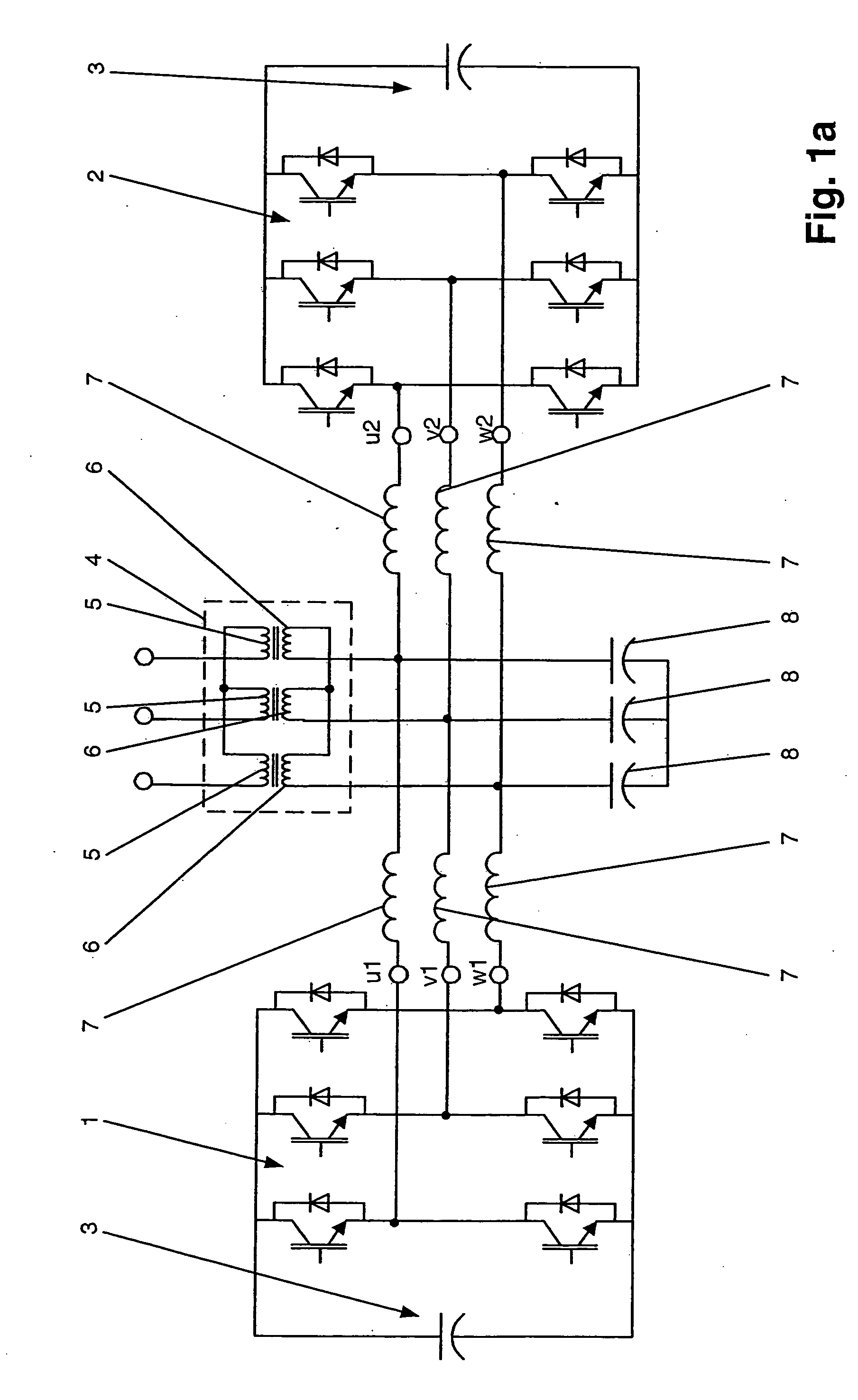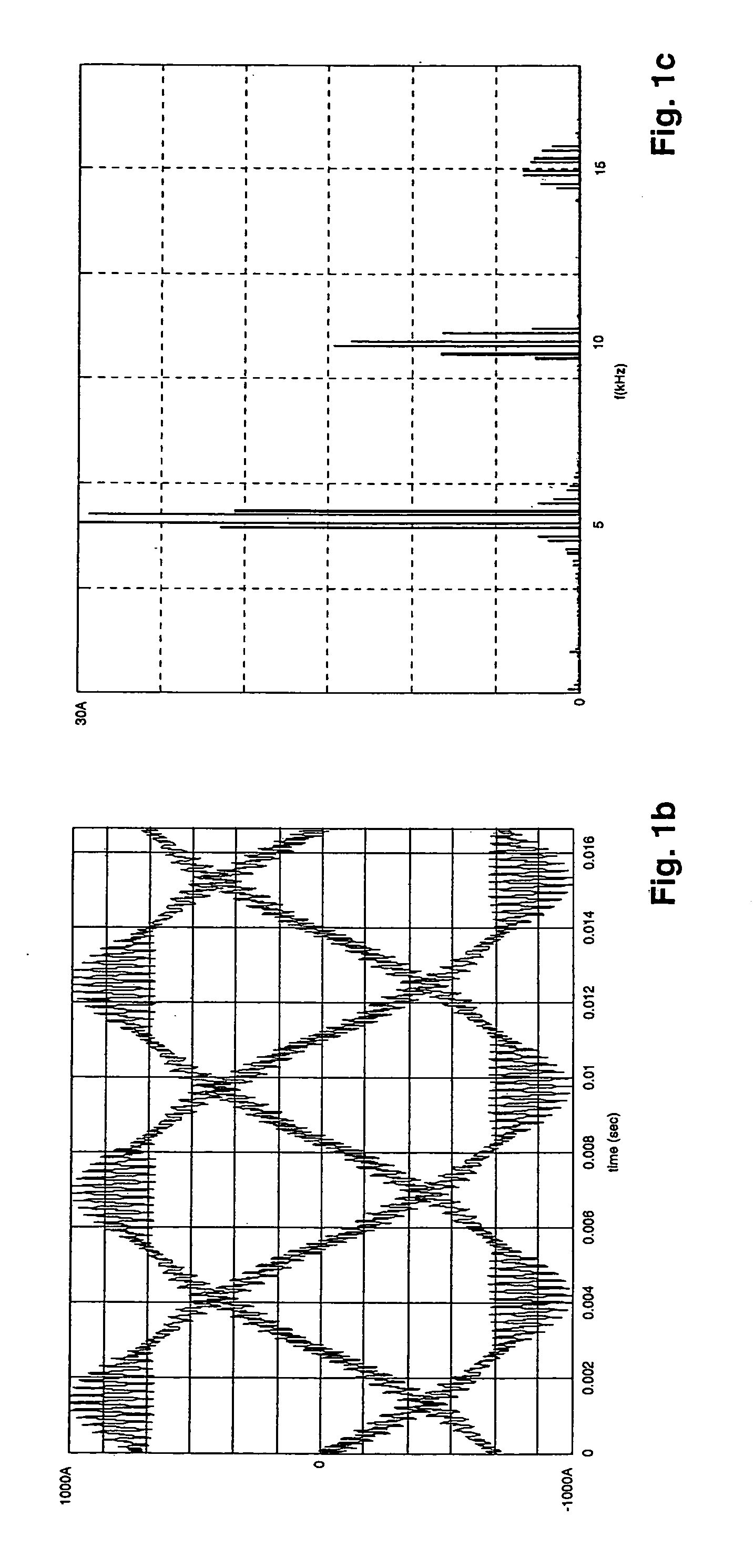Converter circuit with two converter elements
a converter circuit and converter element technology, applied in the field of power electronics, can solve the problems of large amplitude components that are highly undesirable, require a correspondingly large amount of space, and are very expensive, and achieve the effects of low load, significant increase in the overall availability of the converter circuit, and low cos
- Summary
- Abstract
- Description
- Claims
- Application Information
AI Technical Summary
Benefits of technology
Problems solved by technology
Method used
Image
Examples
first embodiment
[0017]FIG. 2a shows a converter circuit according to the invention,
[0018]FIG. 2b shows a time profile of the output currents of the converter circuit as shown in FIG. 2a on the primary side of the transformer,
[0019]FIG. 2c shows a frequency spectrum of an output current as shown in FIG. 2b,
[0020]FIG. 2d shows a time profile of the output voltages of the converter circuit as shown in FIG. 2a on the primary side of the transformer,
[0021]FIG. 2e shows a frequency spectrum of an output voltage as shown in FIG. 2d,
second embodiment
[0022]FIG. 3 shows the converter circuit according to the invention,
third embodiment
[0023]FIG. 4 shows the converter circuit according to the invention,
[0024]FIG. 5 shows one embodiment of an energy storage device according to the invention,
[0025]FIG. 6 shows one embodiment of a drive system according to the invention, and
[0026]FIG. 7 shows one embodiment of a converter system according to the invention.
[0027] The reference symbols used in the drawing and their meanings are listed in summarized form in the list of reference symbols. In principle, identical parts are provided with the same reference symbols in the figures. The described embodiments represent examples of the subject matter of the invention, and have no restrictive effect.
Approaches to Implementation of the Invention
[0028]FIG. 2a shows a first embodiment of a converter circuit according to the invention. The converter circuit comprises a first and a second converter element 1, 2, with each converter element 1, 2 having a DC voltage circuit 3. As shown in FIG. 2a, each converter element 1, 2 is de...
PUM
 Login to View More
Login to View More Abstract
Description
Claims
Application Information
 Login to View More
Login to View More - R&D
- Intellectual Property
- Life Sciences
- Materials
- Tech Scout
- Unparalleled Data Quality
- Higher Quality Content
- 60% Fewer Hallucinations
Browse by: Latest US Patents, China's latest patents, Technical Efficacy Thesaurus, Application Domain, Technology Topic, Popular Technical Reports.
© 2025 PatSnap. All rights reserved.Legal|Privacy policy|Modern Slavery Act Transparency Statement|Sitemap|About US| Contact US: help@patsnap.com



